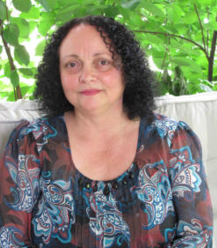
Exploring the Divine Library, by Richard Rowe
Ozark Mountain Publishing, 9781940265803, 240 pages, March 2021
Exploring the Divine Library by Richard Rowe is a continuation of the journey outlined in his first book, Imagining the Unimaginable: A System’s Engineer’s Journey into the Afterlife, detailing his personal spiritual journey after having a near-death experience as a result of a blood clot in 2004. This experience set Rowe on a quest to deeply analyze and question death, suffering, and how people’s lives often play out in unfair ways. Finding success in a very methodical and analytical style of questioning, the questions became bigger and deeper in their intention and Exploring the Divine Library was written.
Rowe uses a unique format based on personal experience, trial, and methodical reasoning, which sets it apart from the standard fare of books focused on this subject matter. This is not surprising given that his perspective comes from a strong scientific foundation as an inventor with degrees in Avionics Systems Technology and Computer Science, along with an MBA from Florida Institute of Technology. The result is a purpose-filled fusion of spirituality, research, and science that informs the contents of Exploring the Divine Library.
This book is separated into twenty chapters, six appendices, a robust six pages of references, as well as an additional listing of references by chapter. The Introduction provides the reader with clarity of reference as to how Rowe defines the term “Divine Library” and the alternate nomenclature used:
“From ancient times to the present day, many names have been used to refer to information existing somewhere beyond our three-dimensional universe. These names include Akashic Field, Heavenly Library, the Book of Life, Hall of Two Truths, Library of Light, Cosmic Mind, the Matrix, Universal Library, Collective Subconscious, Holographic Library, and others.”1
The entirety of the book is founded upon questioning, researching, experimenting, experiencing, and finally drawing your own conclusions. Exploring the Divine Library reads much like a technical manual and may feel less mystical in its offerings. It is complete with sketches that also bring to mind lab experiment journals. The intention however is clearly one of analysis and organization that leaves room for both skepticism and belief.
“The focus of my exploration continues to be driven by questions that deeply resonate with me. I research a variety of first hand experiences and my own experiences to search for insights. This process is very similar to the approach I have used throughout my career as an inventor to invent, describe, and document systems systematically.”2
“Chapter 2: The Divine Library” lays the groundwork for deepening the readers understanding of what its purpose and nature is. Rowe uses his own findings as well as those who have used hypnotherapy and past-life regression with clients who have reported similar settings and attributes of a storage center (“a multidimensional spiritual data cloud”3) that records all human experience, words, thoughts, actions and the workings of consciousness.
Chapters 3 – 7 take the reader on a journey through the mechanics of the Divine Library. Rowe gives attention to structure, access and the effects of patterns and life cycles on the information stored not only for the personal, but on a collective webbing as well.
Chapters 8 – 13 explore the underpinnings of exploring the purpose and interconnections between the individual and the information contained within the Divine Library. Rowe takes the reader through the processes of formulating the questions, intention, problem solving, and connecting through meditation and prayer.
“Chapter 12: Life Purpose” explores the quintessential question of all humans at some point of their existence: what is my purpose? Rowe explains the importance of asking that and other “big questions” as part of the life experience. The reader learns the value of this movement through life by questioning, and its value when applying this same approach to accessing and co-creating within the Divine Library.
“A significant life event can be the perfect opportunity to ask big questions and evaluate life… Whatever the scenario, asking what is my purpose usually comes along with waves of emotion, confusion, and an off-balance feeling…”.4
Chapters 14-19 provide the reader with practical application of what has been revealed through personal research and analysis of the function of the Divine Library. How to access the records and the interconnectedness of all energetic beings is discussed, as well as ways to exercise manifesting the energy needed and expand the boundaries of individual consciousness to reach into the Divine Library’s resources.
Finally, “Chapter 20: Lessons Learned” is a summary of what Rowe (and perhaps the reader) experienced in his explorations of the Divine Library. I think this was a necessary way to conclude the book and doing so left no loose ends for the reader to try to interpret.
This book is not, by any means, an intuitive or easy read. It is user-friendly only if you have a curious and methodical mind that enjoys the minutia of dissecting whatever your focus is applied towards. That being said, I think it is a necessary and well-founded approach since the goal for the reader is one to know more about his/her/their self and the ultimate purpose of this particular lifetime. If you are willing to put in the work and pay attention to the details, you will find that the gifts of outcome are well worth the time spent in dissecting and analyzing. Exploring the Divine Library provides the access card to enter into the universal data of the Divine Library.

Robin Fennelly is an Elder within the Assembly of the Sacred Wheel Tradition [www.sacredwheel.org]. She is a dancer, teacher, astrologer, author, ritualist and seeker of all things of a spiritual nature. Her writings and classes incorporate a deep understanding of Eastern practice and Western Hermetics and bring a unique perspective towards integration and synthesis of the Divine and Mundane natures of our being. She is a mother of five and lives in Eastern PA with her husband of 45+ years.
